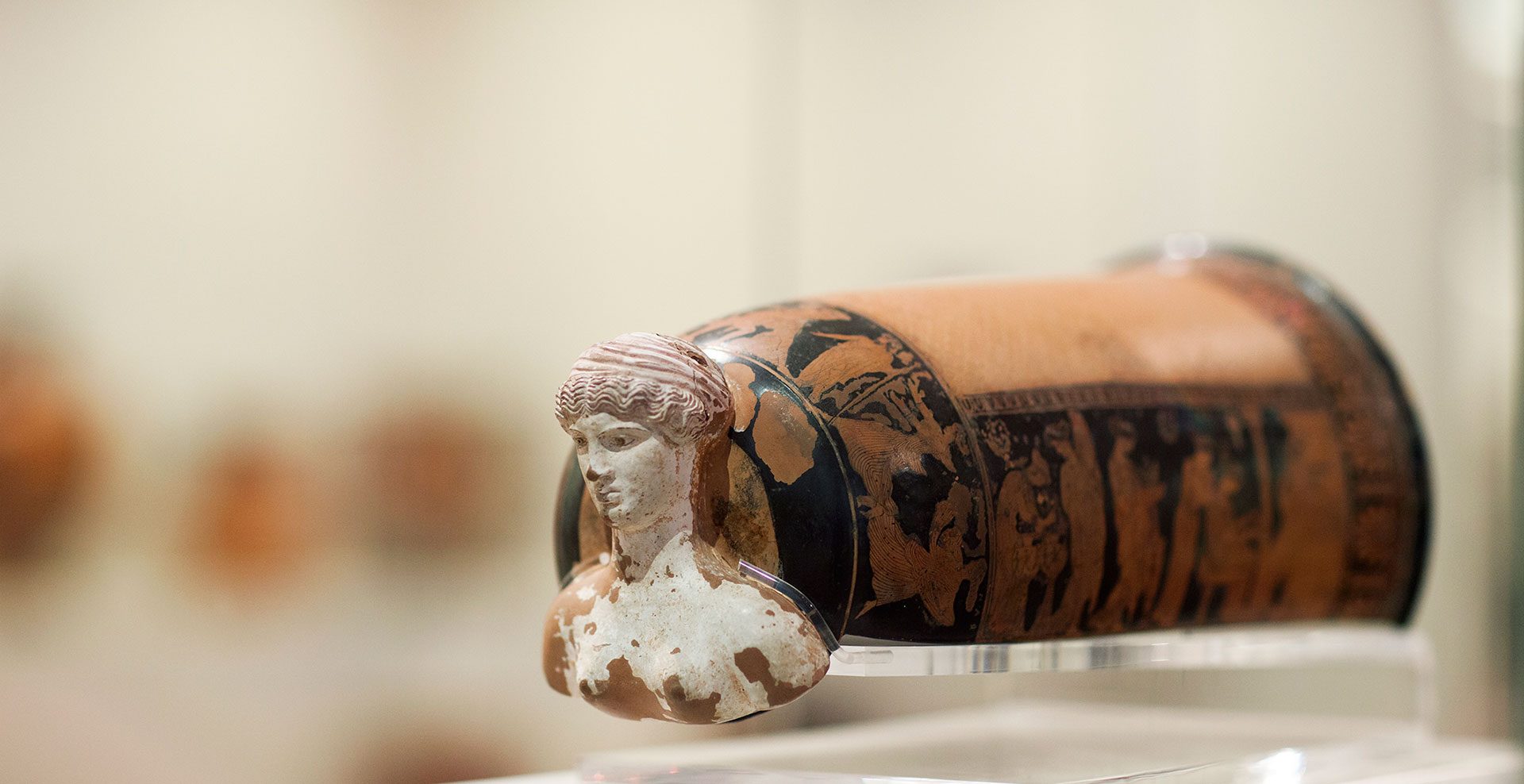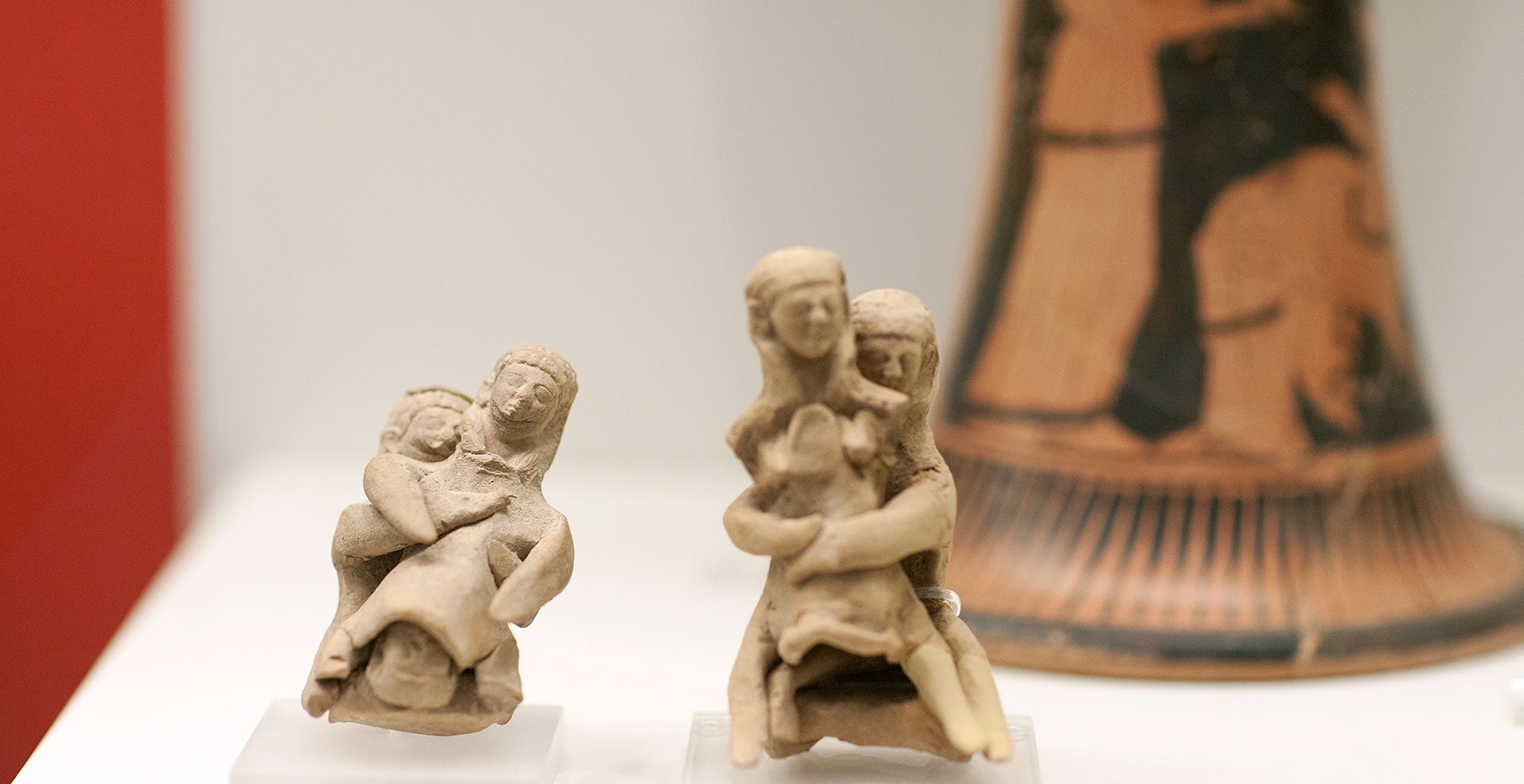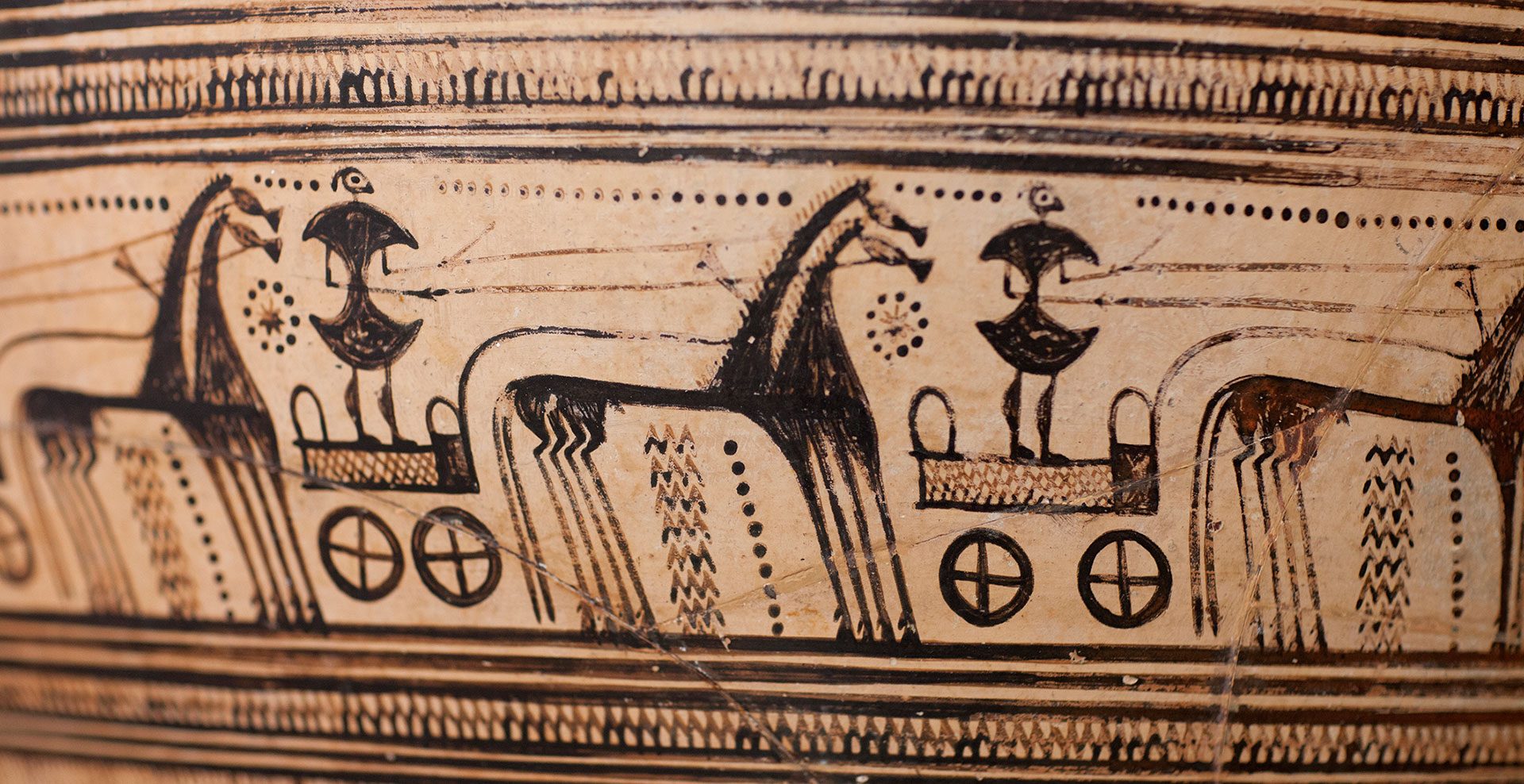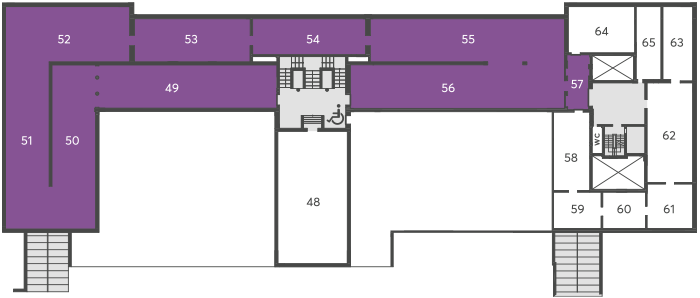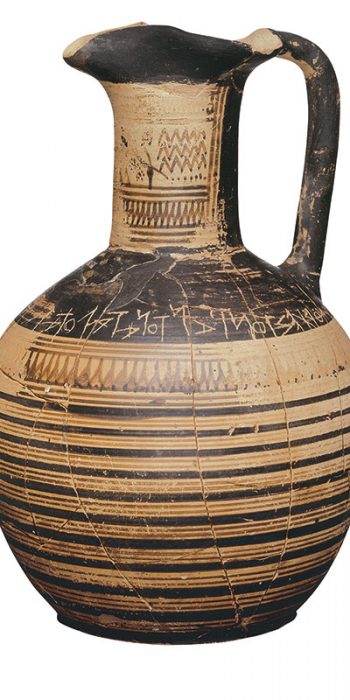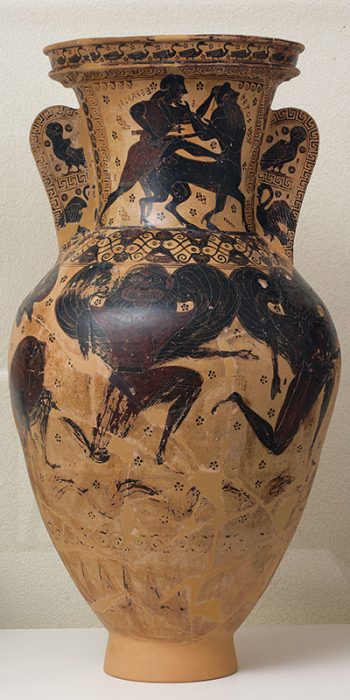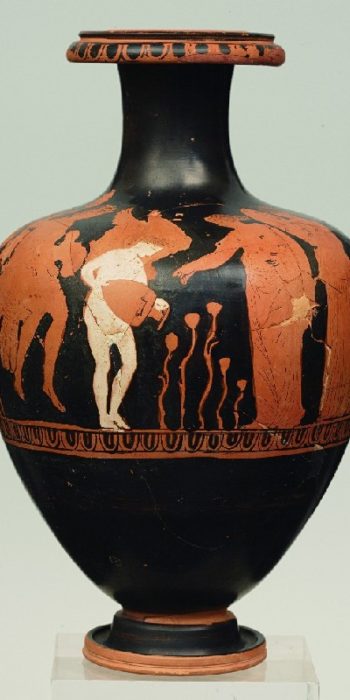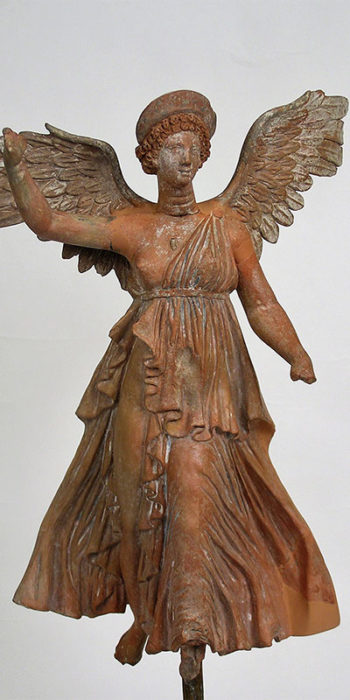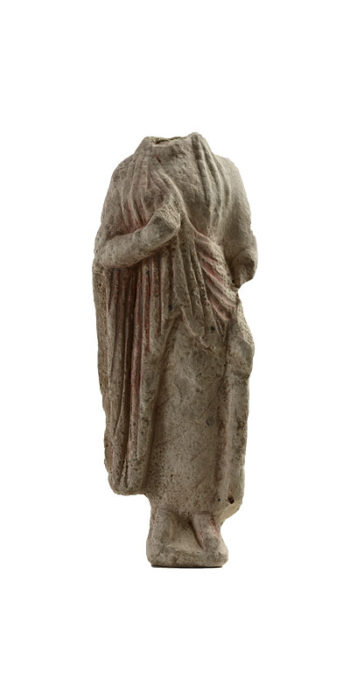Vase and Minor Arts Collection
Fifteen rooms, an exhibition area approximately 2.000 sq. m in total area, more than 250 display cases and pedestals with 5.500 exhibits constitute the Vase and Minor Arts Collection one of the largest of its kind. However, the diversity and quality of the exhibits have turned it into one of the most comprehensive and significant collections worldwide for the study and understanding of ancient Greek pottery and minor arts. Its storage facilities contain clay, gold and silver jewels and vessels, signet rings, paintings, architectural members, glass vases and small artefacts made of ivory and bone. Their time span covers approximately 23 centuries, from the Sub-mycenaean vases of the 11th-10th century BC to the byzantine jewels dated to the 13th century of the Stathatos Collection. They were unearthed in tombs and sanctuaries (Athenian Acropolis, Sounion, Perachora, Sparta, Thermon, the Boeotian sanctuary of the Cabeiri, the sanctuary of the Cabeiri on Lemnos etc.). Other artefacts come from major collections and donations (e.g. the Empedokles Collection, the Stathatos Collection, the Vlastos-Serpieris Collection and the Misthos Collection), but also confiscations. Others reached the Museum from every single corner of the Greek World. As is natural, the majority of them come from mainland Greece and the Greek islands; nevertheless, there are many artefacts that come from Asia Minor, Macedonia, the Aegean islands, Cyprus, Syria and Palestine, Egypt and Cyrenaica, Magna Graecia and Etruria. Hence, they cover most part of the overseas expansion of the Greek culture.
The earliest objects of the Collection were rescued during the truly heroic era of the Greek archaeology of the 19th century and come from the Collections of the Archaeological Society and from the incipient forms of the National Archaeological Museum, mainly from the Collection of the Orphanage of Aegina and the Theseion. All these objects were handed over in stages to the nascent National Archaeological Museum between 1880 and 1890.
The establishment of the Vase and Minor Arts Collection coincides with the operation of the National Archaeological Museum in 1885 in its modern-day premises, with Vasileios Leonardos (1885-1895), and Valerios Stais (1895-1921) serving as the first Ephors. They were succeeded by Semni Papaspyridi-Karouzou (1923-1968) who maintained and valorised the Collection in the post-war years. After World War II (1950) the Collection was reinstalled to its present location on the Museum’s upper floor. It has been successively curated by the Ephors Varvara Filippaki (1968-1978), Olga Alexandri (1980-1982), Eo Zervoudaki (1982-1999) and Betty Stasinopoulou-Kakarouga (1999-2009).
The new display of the Vase and Minor Arts Collection was completed in two stages. The first part was inaugurated in 2005 and included the main Vase Collection (Rooms 49-56, approximately 1.500 sq. m in area). The second part, in 2009, which occupies the space (circa 500 sq. m) where until then the Numismatic Museum was housed, was enriched with the Hellenistic vessels, the terracotta figurines, the Vlastos-Serpieris Collection, the gold jewellery, silver vessels and objects made of other precious materials, as well as the glass vases (Rooms 57-63). Finally, in 2006 on the ground floor (Room 42) the Stathatos Collection was redisplayed anew.
The Vase Collection
In the main Vase exhibition 2.430 artefacts are on display. The exhibition programme intends to offer visitors a panorama of ancient Greek pottery and vase painting from the Sub-Mycenaean to the Late Classical period.
The key element of the Vase and Minor Arts Collection is its educational character. The wealth, the quality and the classification of the exhibits in accordance with their time period and workshops, help those visitors who are interested in more than just a simple tour, but also pupils and students of classical studies construe the evolution of pottery and vase painting through the comparison of the Attic workshop with its counterparts in other regions. Furthermore, the Rooms that contain finds from the great Greek sanctuaries, such as the Heraion of Argos and of Perachora, the sanctuary of Thermos in Aetolia and Artemis Orthia in Laconia, delineate the nature of the early Greek sanctuaries. The same occurs with the votive paintings on wood from Pitsa Cave in Corinthia, some of the rarest examples of original painting of the 6th century BC that have lived on to this day.
The exhibition (Rooms 49-57) includes three thematic units, which are particularly useful for the performance of the educational programmes of the Museum to students. The first unit concerns the world of the Athenian women (Room 55) and the other two examine childhood and sports (Room 56). As we move from the main exhibition to the galleries of the new collections (Room 57) two display cases show representative types of Hellenistic vases (Hadra cinerary hydriae, lagynoi as well as black-glazed vessels with polychrome and relief decoration).


